"June 14th 1867
Book 2 Page 319
Consideration: $80.00
Covenants: Grant bargain sell release ***** Claim
NAME OF GRANTOR AS SIGNED
J.S. Mannasse (LS)
E.W. Morse (LS)
Thos H Bush (LS)
Trustees of the City of San Diego
NAME OF GRANTEE IN BODY OF INSTRUMENT
JS Mannasse
Marcos Schiller
Ack'd June14th 1867 before G.A. Pendleton, San Diego Co. co clerk with Official Seal.
Filed, June14th 1867 at 6h P.m. G A Pendleton Recorder
DESCRIPTION
Fractured lot of parcel of land laying + being between lots 1156 +1157 + the bay of San Diego + bounded on the N by the sec lot 1156 and on the E by the sec lot 1157+ on the S + W by the sec Bay of San Diego situated within the limits of the Pueblo lands of SD City as per official map of sec Pueblo lands by Charles H Poole in 1856"
"We landed at the old wharf, near where the coal bunkers [Santa Fe wharves] now are, and had to wait there an hour for a wagon to come and take us up to San Diego (Old Town). While we were waiting, I walked up to where the court-house now is and looked over the ground. There was nothing there but sage-brush then. I thought San Diego must be a heaven-on-earth, if it was all as fine as that; it seemed to me the best spot for building a city I ever saw." - Alonzo Horton, History of San Diego, 1542 - 1908
"On motion of E.W. Morse it was Resolved that an order be entered for the Sale of certain farming Lands of the city property. Said Sale to take place on the 10th day of May, 1867, at the Court House."
"Fractured lot lying between 1156 +1157"
"Fractured lot of parcel of land laying + being between lots 1156 +1157 + the bay of San Diego + bounded on the N by the sec lot 1156 and on the E by the sec lot 1157+ on the S + W by the sec Bay of San Diego"
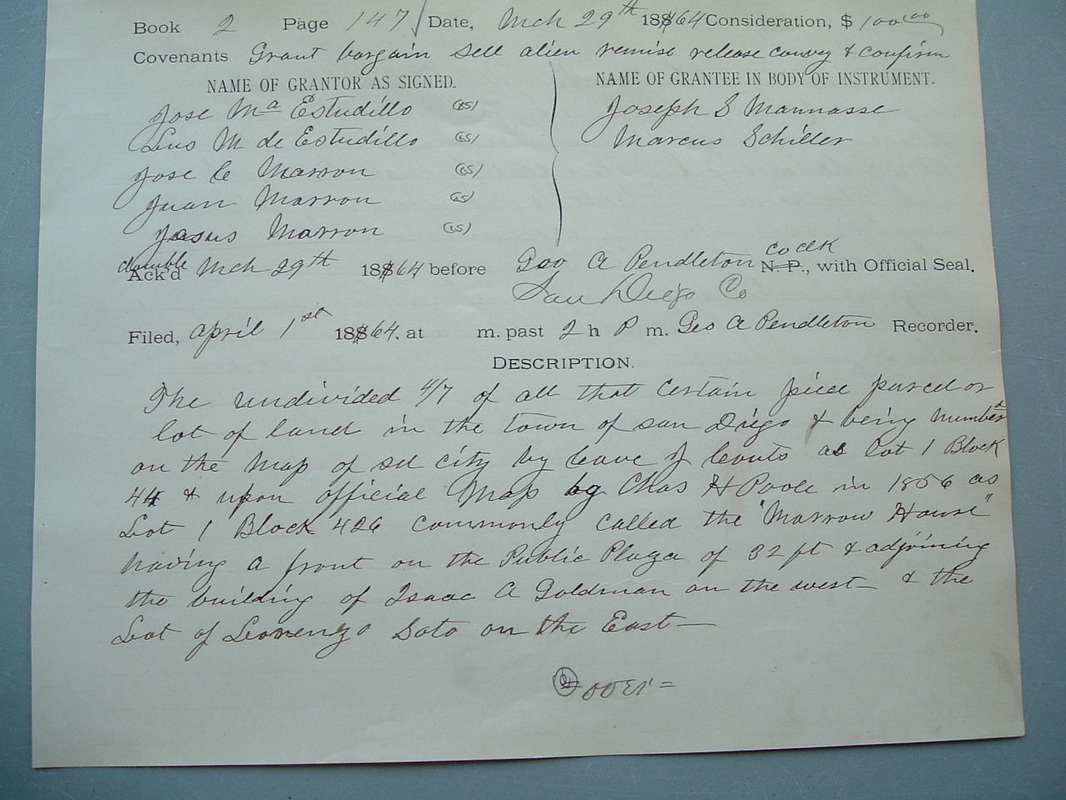

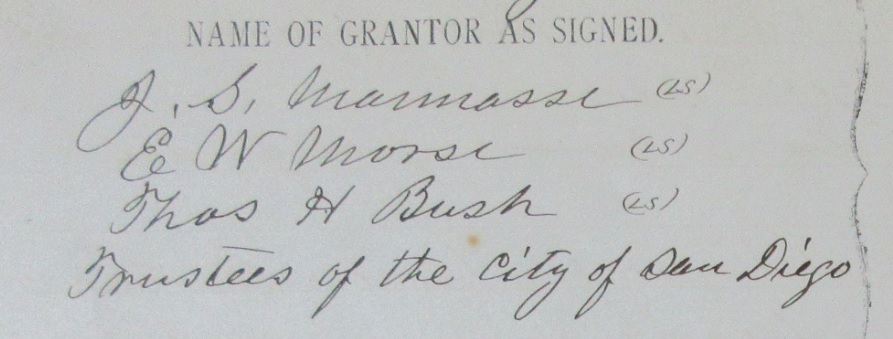
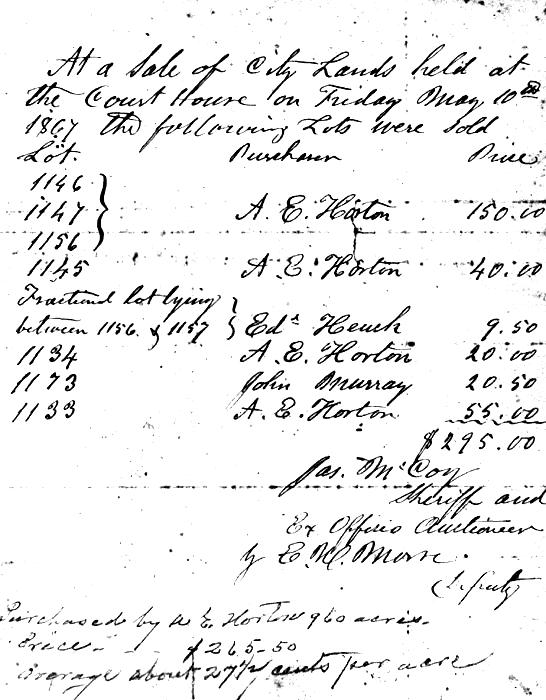
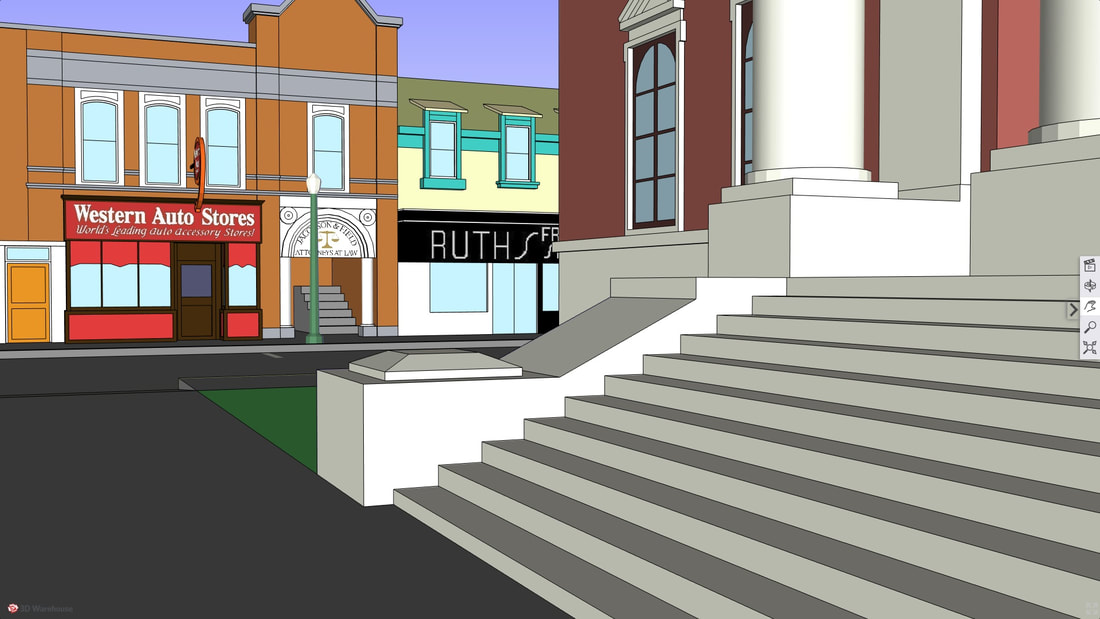
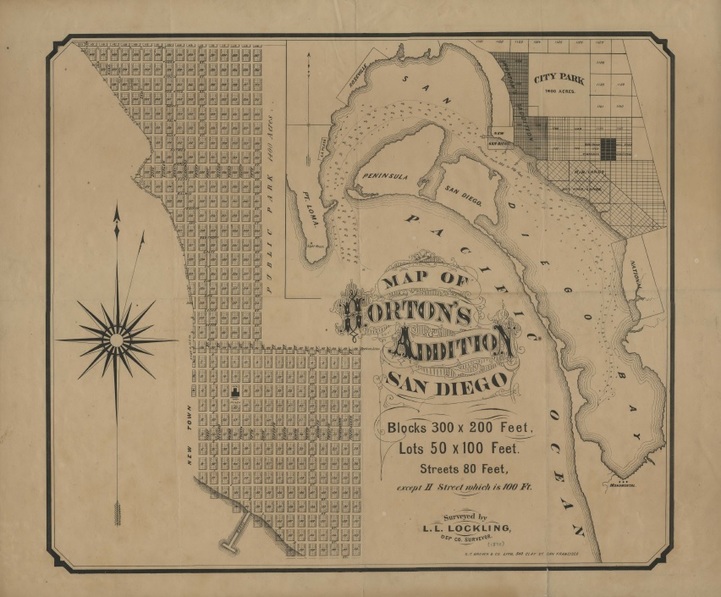
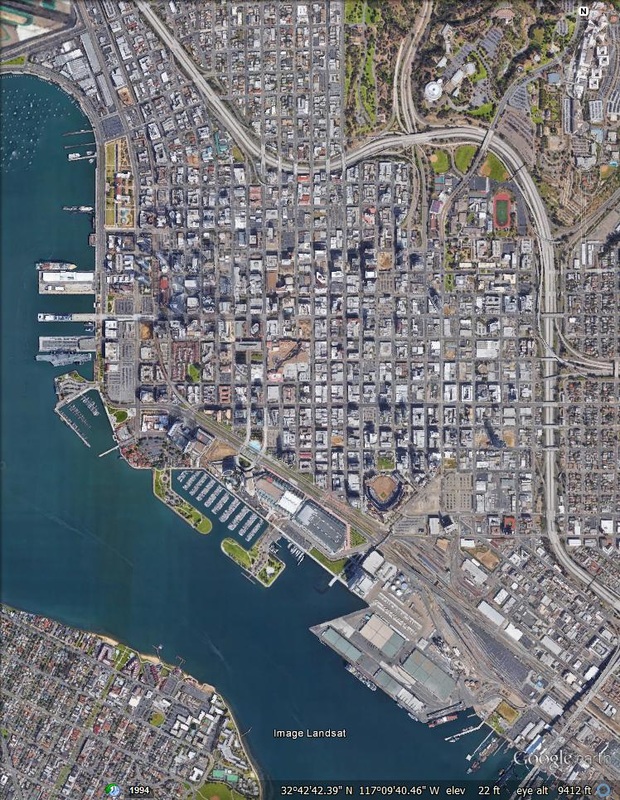
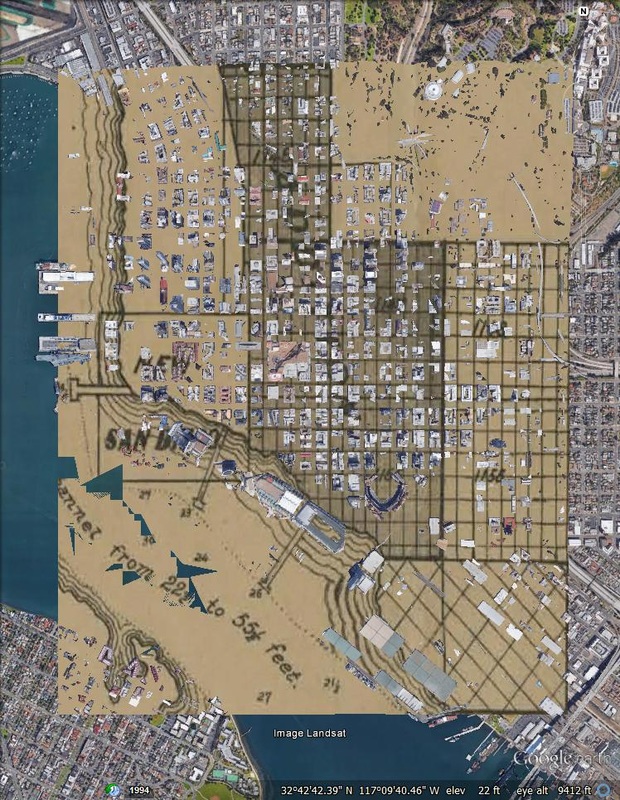
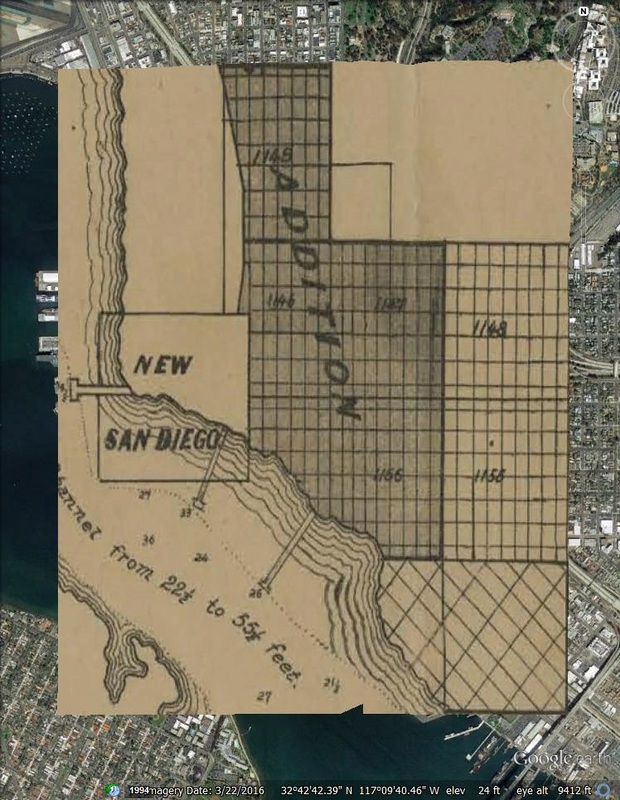
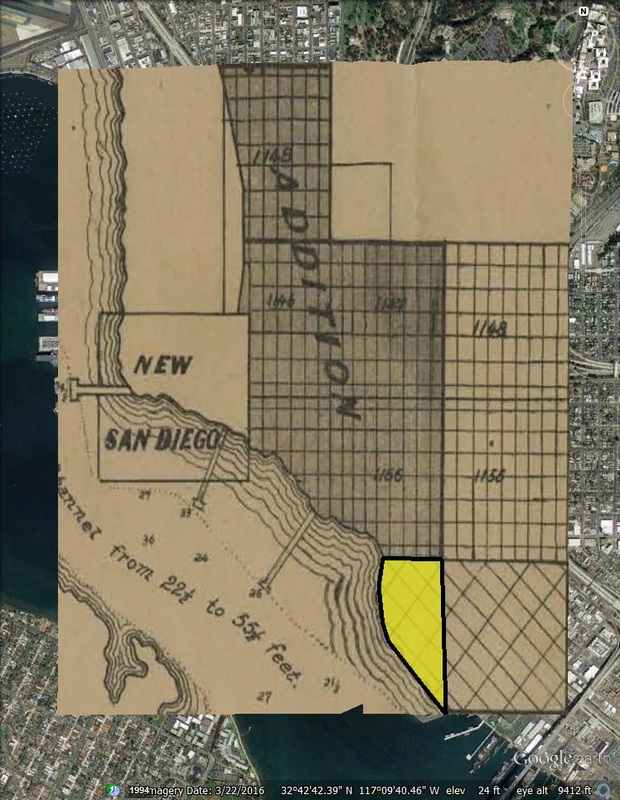
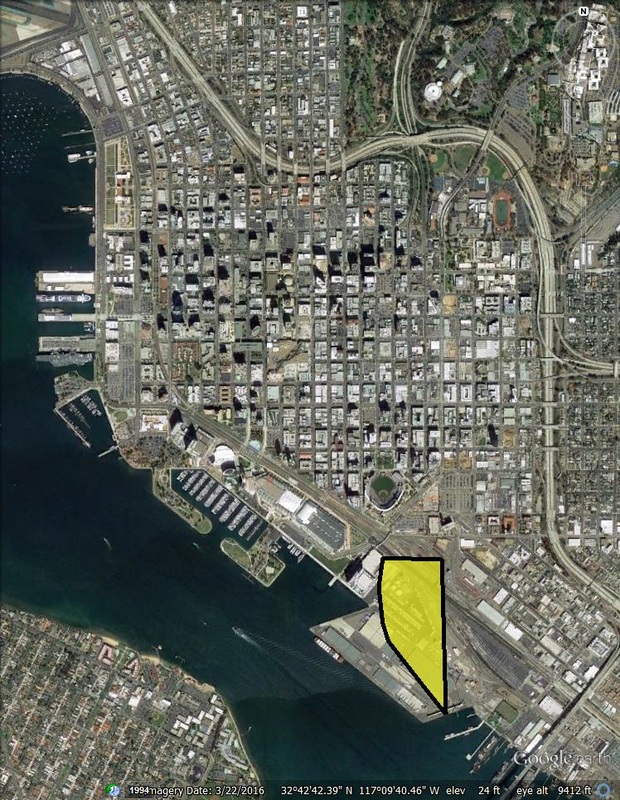
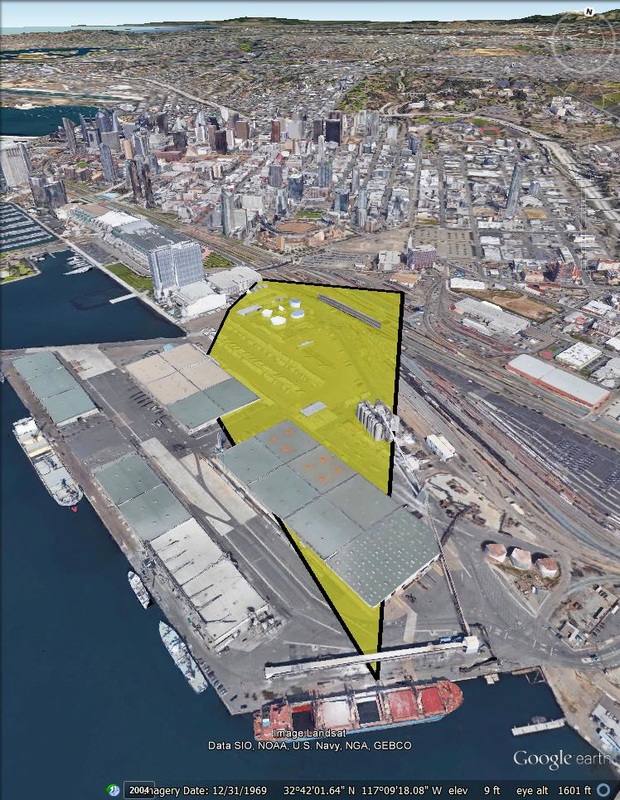
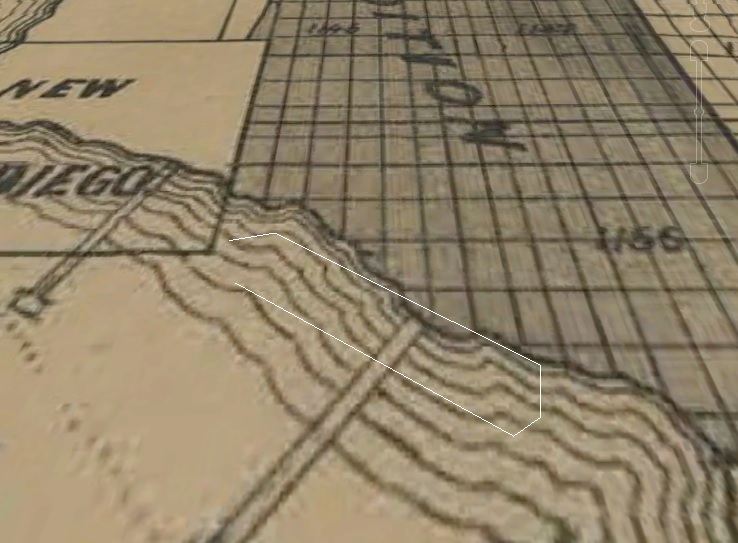
 RSS Feed
RSS Feed